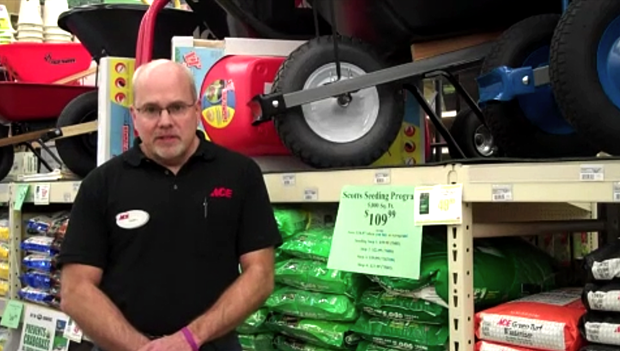You don't the permission to view this video
Whether your lawn is infested with dandelions or if you just have a few popping up that need eradicated, this video is for you. We’ll give you some tips on how to get to the root of the matter using both chemicals and non-chemical methods. Either way, you’ll be dandelion-free in no time.
Are dandelions getting you down? Are your dandelions getting your neighbors down? Perhaps it’s time to take matters into your own hands with some products from your local independent home improvement retailer.
Today we’re going to show you some different ways to keep dandelions from infesting your lawn. We’ll show you some spray-on chemical applications that will knock them back when they first start to sprout up. Then we’ll show you some interesting and innovative tools to help you eradicate them from your lawn if they do take root. So let’s get started.
Getting rid of dandelions requires getting to the root of the matter, or more precisely the taproot, as it is called. A dandelion’s taproot is the reason these perennial plants are so hard to eradicate. The top can be pulled or mowed over, but the taproot remains intact and the plant re-sprouts over and over again. Here’s a dandelion where not all the root was pulled out. Despite how much we pulled out, it will grow back.
It takes killing or completely extracting the taproot to stop the infestation. And for years, mankind has been coming up with chemicals and tools to help solve this problem.
Let’s start with the chemicals. There are plenty of products to choose from, including herbicides as well as some organic choices. Perhaps the easiest ones to use can be hooked up to your hose and sprayed onto the entire lawn. Just be sure to wear rubber gloves and a mask while applying. The great thing about these products is they kill a variety of turfgrass weeds, including dandelions, but because they are selective herbicides, they won’t hurt the turfgrass. They are also systemic herbicides, which means they will be absorbed by the plant and carried to the root. Remember, when it comes to dandelions, it’s all about killing the root.
It’s extremely important to read and follow the manufacturer’s instructions carefully when applying any chemical herbicide to your lawn.
If you don’t have an infestation of dandelions, and don’t want to spray your entire lawn, there are other chemical spray products that can be sprayed directly onto the plants. In just a day or two, you start to see them wither and die.
If you’re are hesitant to use these strong chemical herbicides on your lawn, there are now organic products that perform much the same way and produce similar results. The primary ingredient in these products is an iron derivative, which has been proven to kill lawn weeds like dandelions without having an adverse effect on the environment. Just a couple shots and in a couple days the dandelions start to wither and die.
So what if you don’t want to wait a couple days for these chemicals to take action and just want to get rid your dandelions ... now. This is where the fun really starts.
It’s pretty amazing when you look at all the lawn gadgets that have been invented over the years to eradicate dandelions. It shows you how much of a problem they can be. The products I’m going to show you today have proven themselves to be effective, and many have stood the test of time. While some are designed with the sole purpose of pulling dandelions, others have multiple uses which makes them even more useful.
The first one here is the good old standby that your grandmother probably used in her lawn ... the long handle dandelion puller. This tolls has a forked end that you can use to dig under the taproot and then carefully pry it out. There are also hand-held models available that operate under the same principle. This one has a pivot point to help you pry the root out of the ground.
This auger bit, when used with a cordless drill, is designed to spin the dandelion out of the ground ... root and all. It takes some practice, but once you have the method down, it’s pretty effective ... and a whole lot of fun. For taking dandelions out of a garden bed, this Japanese weeder does the trick.
Perhaps the most fun we’re going to have today is demonstrating this foot pedal dandelion puller ... or popper ... as it’s called. You dig the tines in at the base of the root, press down on the foot pedal, and as you can see, it pulls the plant out of the ground ... root and all.
There you have it--a lawn that it on its way to being dandelion free in a matter of time. And who would have thought that pulling these pesky weeds would be this much fun?
Steps
- 1.
Many chemical dandelion-killing products can be attached to your garden hose. Always wear protective gloves and a mask.
- 2.
If you don't have a large infestation of weeds, simply use the spray bottle on targeted areas.
- 3.
If you don't want to use such strong chemicals, there are organic choices. These products use an iron derivative that's less harmful to the environment.
- 4.
The long-handled dandelion puller has a forked end to dig under the tap root (the reason dandelions return).
- 5.
An auger bit screws the dandelion out of the ground.
- 6.
The Japanese Weeder is useful for garden beds. It gets the tap root without damaging garden plant roots.
- 7.
The foot pedal dandelion puller/popper works by stepping on the pedal after you stick the spikes under the weed.





Comments (0)